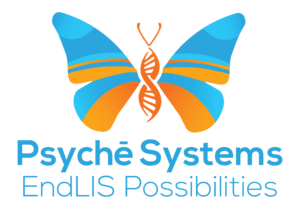Precision plays a crucial role in the field of gastrointestinal pathology. Precision helps laboratory personnel rule out diagnoses and helps clinical staff tailor effective treatment plans to enhance patient outcomes.
Laboratory Information System (LIS) software can be a key player in enhancing diagnostic precision. The software helps manage patient data and specimen tracking, reducing the risk of errors.
Discover how Psyche’s LIS software can improve the accuracy of diagnoses in GI pathology laboratories.
Understanding Laboratory Information System (LIS) and Instrument Integration
LIS is a specialized software designed to streamline workflows. This software helps with ordering, sample collection, and accession. It can also help with auditing and reporting.
The power of a Laboratory Information System lies in its capacity to integrate with an array of laboratory instruments and software. Facilities can integrate LIS with labelers, imaging devices, billing vendors, and Electronic Health Record (EHR) systems. These integrations serve one primary purpose—to create an interconnected laboratory environment where data flows seamlessly between different instruments and platforms. LIS also improves accuracy by eliminating error-prone manual processes.
Like any diagnosis, precision matters a lot in GI pathology. Clinical staff rely on accuracy to make the right diagnostic decisions. Therefore, inaccurate test results could lead to adverse outcomes, including medical errors and overtreatment.
The Benefits of Instrument Integration in GI Pathology
Instrument integration creates more than just a streamlined laboratory environment. It comes with multiple benefits that optimize GI pathology. Some of the most notable benefits that diagnostic labs get from a Laboratory Information System include:
1. Streamlined workflows and reduced manual errors.
Instrument integration enables lab equipment to transfer data to the LIS system automatically. This integration helps streamline processes like sample processing, data management, and result reporting.
LIS integration also eliminates the need for error-prone manual data entry. The automation accelerates data entry, saving clinicians more time for patient care. Moreover, the automated data entry minimizes the risk of human error.
2. Real-time data capture and analysis for enhanced accuracy and efficiency.
In the past, data entry in laboratories was a manual process. While this method has worked well, any manual process will be susceptible to delays. LIS integration eliminates delays by updating patient records in real time. Once a tissue sample is processed, results are instantaneously added to the patient’s record.
Real-time data analysis allows healthcare professionals in GI pathology to access critical information promptly. This feature allows for quick treatment decisions, helping patients recover quickly and potentially alleviating suffering earlier in treatment.
3. Improved collaboration and communication among healthcare professionals through integrated systems.
LIS integration ensures that authorized healthcare professionals can access pathology reports in real time. This connectivity allows clinicians, gastroenterologists, and other healthcare providers to access a unified and up-to-date patient record, fostering a collaborative approach to healthcare.
Considerations and Implementation of Instrument Integration
Implementing instrument integration requires proper planning. The strategic planning helps labs align the integration to match their workflows. Additionally, planning ensures that lab workers adopt the new processes with ease.
To get you started, experts at Psyche recommend that labs build their implementation strategy around several key areas.
Factors to Consider When Selecting and Implementing Instrument Integration in a GI Pathology Lab
Before implementing instrument integration, GI pathology labs should thoroughly analyze their workflows. This analysis will ensure that the implementation aligns smoothly with existing processes. Beyond workflow assessment, labs should consider the following aspects when selecting and implementing instrument integration:
- Scalability.
- Compatibility.
- User-friendliness.
- Data security.
- Vendor support.
Challenges and Potential Solutions in Integrating Instruments With the LIS
Different laboratory instruments often operate on disparate communication protocols. As such, some LIS software might not integrate with existing lab instruments. Before investing in an LIS, labs should ensure the software they select will properly sync with their lab instruments.
Other common challenges labs encounter when integrating instruments with the LIS include:
- Workflow disruptions.
- Security concerns.
- Staff resistance.
Importance of Training and Ongoing Support for Successful Utilization of Instrument Integration
The implementation of instrument integration in labs requires adequate training and ongoing support. Training will equip laboratory staff with the skills to operate integrated systems effectively.
Like training, ongoing tech support is equally critical. Support ensures that staff can access the assistance needed to solve challenges. With support available after installation, laboratories can avoid operational disruptions, increased likelihood of errors, and challenges adapting to system changes.
Integrate Your GI Pathology Lab’s Instruments with Psyche Laboratory Information System
Diagnostic precision is vital in GI pathology. Precision helps clinicians make treatment decisions, enhancing the quality of care. Instrument integration is one way of improving the accuracy of GI pathology. LIS will automate data flow, eliminating the risk of manual errors.
Psyche’s LIS is a software product that labs can use to integrate various instruments. Psyche’s developers have designed our software to seamlessly interconnect a wide variety of diagnostic tools, including Electronic Health Records (EHR), imaging devices, labelers, and analyzers.
Schedule a demo for a first-hand look at how our LIS software can revolutionize your GI pathology lab.

